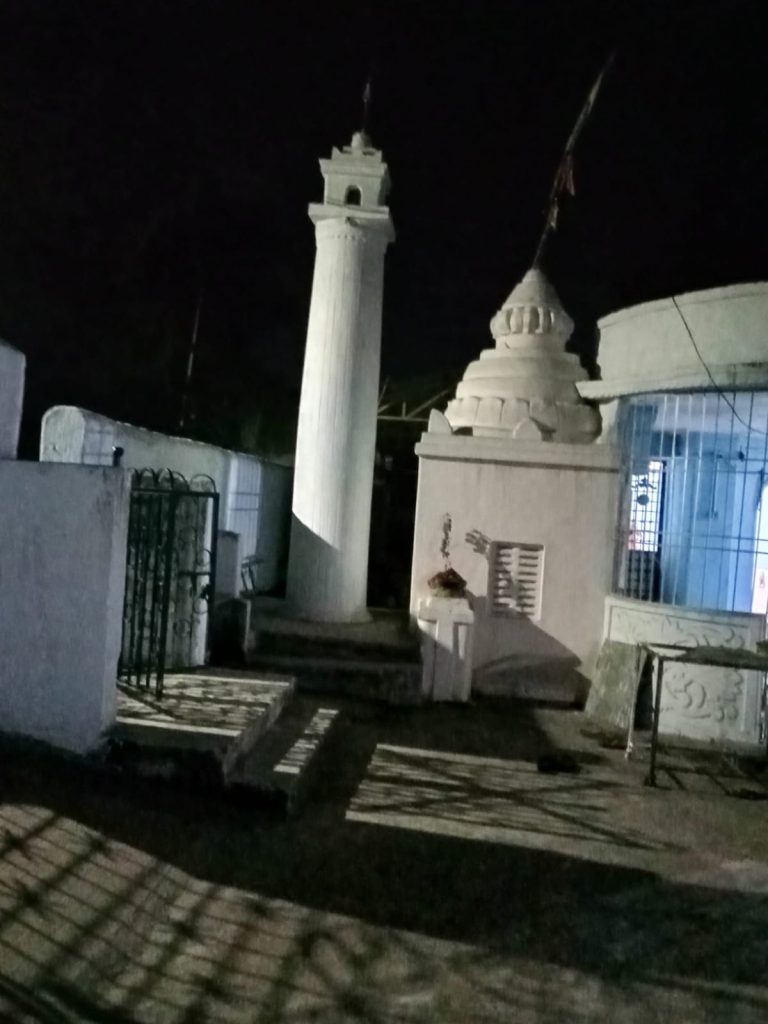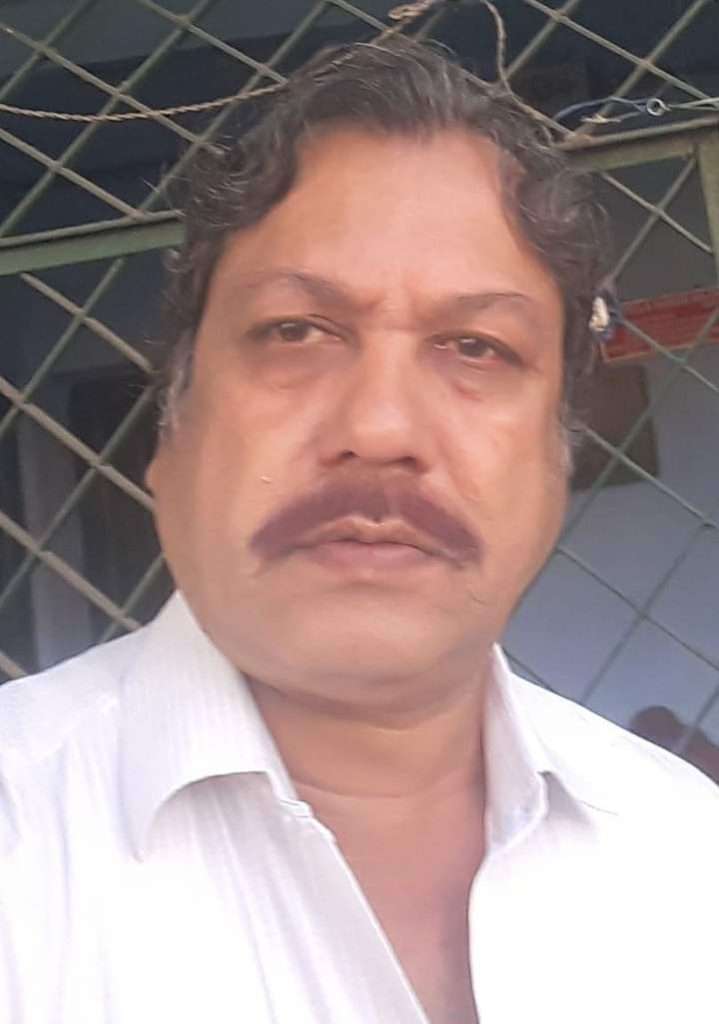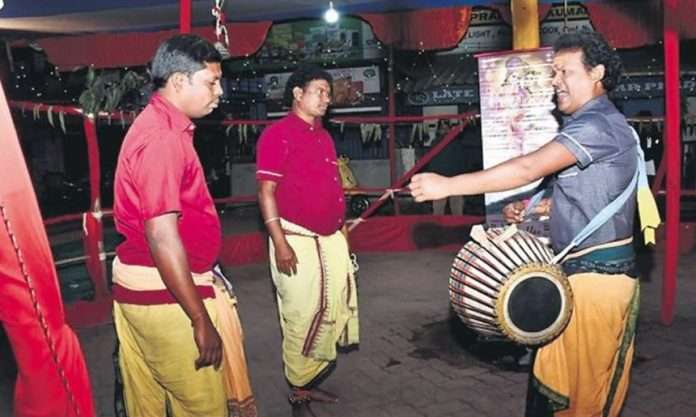The year was 1980. While listening to a folk music program (Loka Geeta) on All India Radio, Sambalpur at night, the following songs attracted my attention:
“Bela abasana kale, godhan bahuda bele Shyama chikania tanu, dhulia dhusara.” (At the time of dusk when cattle return, the clean blue body has become dusty and grayish.)
and
“Aha Chameli majare sara dunia maja. Chaitra dharma, paraupakara, adara maja. Ahuri maja. Saraba raije khyata ate, Saraba raije khyata ate. Gandhi Mahatma ahinsa maja.” (Aha Chameli, the whole world is interesting. Chaitra dharma, help to others and hospitality are interesting. More interesting. The non-violence of Mahatma Gandhi popular around the globe is interesting.)
The first song, being devotional, and the second one in a lighter vein were sung so beautifully that even today, I remember them after so many years. The ‘bahak’ was the leading voice, also playing the mridanga, supported by two followers called ‘palia’ or ‘bayamana.’ I enjoyed the half-hour sanchar program along with one of my friends from a rural area who himself played mridanga in kirtan programs.
This is not the first time that I listened to sanchar. The chance listening took my memory years back to the 1970s when in Dhanupali near Sambalpur (now part of Sambalpur city), Chandan Yatra was organized every year. Sanchar parties would be invited, mostly from districts of western Odisha, who would perform one by one throughout the night for three to four days. On the concluding day, there would be a competition among the parties. At that time, popular sanchar performers (bahak) like Sri Manbodh Bhatt, Sri Alekha Sahu, Sri Bipin Seth (Barahgudia), Smt. Chandrama, Sri Nandlal, and others turned up to participate in the Yatra. Chandrama was the only woman sanchar artist then. The ‘palia’ or ‘bayamana’ or followers were equally popular and made the program very much interesting.
The ‘bahak’ would start with the recitation of a shloka at the same time playing the mridanga in a standing posture for quite some time. He would sing:
“Dhanatata dhaiya, Dhanatata dhaiya Govinda Gopala, Govinda Gopala.”
Then the program would start by making rounds at the venue. The ‘bahak’ would move first followed by the ‘palias.’ The rhythm of the mridanga with ‘Tapa’ in between was fantastic. The ‘bahak’ and ‘palias’ would wear kurtas and dhotis with towels tied around their waists. Certain ‘bahaks’ would put on longish curly hair. A sanchar program would normally include the following items:
- Recitation of a shloka followed by rhythm on the mridanga.
- An episode from Ramayana, Mahabharata, or Puranas.
- Songs, mostly devotional, written by eminent poets.
- Songs in a lighter vein and also based on popular film song tunes.
- Jokes.
Both the ‘bahaks’ and ‘palias’ would remain serious while presenting the episode. The ‘bahak’ would maintain his serious tone throughout while the ‘palias’ would cut jokes in between and mostly towards the end to keep the audience in good humor. Sanchar, being a blend of both classical and folk dance forms, is the oldest folk dance form of western Odisha and prevalent only in this part of the state. It involves singing (gayana), playing mridanga (badana), and dancing (nartan) to its beats with ‘ghungroo’ tied to the ankle. The sanchar artist should master all three aspects to be an expert in the art.
Years rolled on, and the Chandan Yatra continued to be organized in Dhanupali. We children waited for the yearly event, and when it came, we never forgot to wake up throughout the night and watch the sanchar parties perform. The Yatra could not be organized for years together due to various reasons, and it gave me immense pain. But it has been revived in recent times, which is a good sign for the sanchar art.
My interest in sanchar and folk music did continue till I joined All India Radio in the program cadre. I often met Sri Nandlal, who was a local sanchar ‘bahak’ and instrumental in organizing the Yatra. He did not perform any longer. Still, he never did away with the looks of a sanchar ‘bahak.’ I often asked him to come over to All India Radio and face an audition test so that he could keep his art alive. But he never turned up and came out with the explanation that he was no longer in touch and lacked practice. Moreover, there were no ‘palias’ with him as it was difficult to survive with sanchar as a profession. Sri Nandlal is no more with us. Still, I can never forget his love for the art and his enthusiasm in organizing the Yatra in Dhanupali. Most other sanchar artists who came from nearby and far-off places are also no more with us.

The year was 1993. Sri Bipin Seth or Barahgudia, as he was popularly known then, was still there, and I remembered him. I wanted to highlight him and his art in a radio program. So I went all the way to Barahguda near the town of Bargarh, searched for his house, found him sitting on the cot outside, and interviewed him. He had become very old and feeble. Still, he was very much willing to talk to All India Radio. I asked him why there was a decline in the art. He replied, “Our generation managed somehow and kept the art alive despite all odds. We are also ready to hand over the art. But the young generation is not interested in accepting it as a profession as it is risky for a livelihood. We are really helpless. There is also competition from the latest sources and channels of entertainment, which were not very prominent in our times.” The following reasons may very well be cited for the decline in the sanchar art:
- Lack of interest on the part of the new generation in taking it up as a profession as it is risky for a livelihood.
- Competition from modern music and other sources of entertainment.
- Lack of patrons and takers.
Not only sanchar but also all other folk music arts like ‘pala’ and ‘daskathia’ are on the wane. There is a provision for a folk music audition on All India Radio, which has been instrumental in enriching the local folk music culture. More and more folk artists, including sanchar, pala, daskathia, and others, should take advantage of the audition test. They should also avail themselves of whatever facilities are there in the government sector. Sanchar is mostly confined to the western part of Odisha, unlike many other folk music forms, and therefore faces more chances of extinction because of its limited prevalence unless special care is taken. The following steps may very well be taken for the revival and betterment of sanchar as an art:
- Young generations of families where sanchar has been a tradition should take interest, learn it, and take it up as a side profession.
- Organizers of festivals, Yatras, and community pujas should invite more and more sanchar artists for performance along with other modern items of entertainment.
- Schools, colleges, and universities of the area should encourage students to learn folk music along with studies.
- Eligible artists should be earmarked for an artist pension if not already on the roll.
- A scrutiny as to what further steps can be taken for the revival of the dying arts should be made.
- People should show interest in our tradition along with modernism.
- Patrons and takers should show interest in the art.
It is high time sanchar and the other folk music arts are revived. Regular participation of the folk artists in cultural events organized by the government as well as private organizations from time to time will definitely encourage them, thereby upkeeping the great Indian tradition.
(The views expressed are the writer’s own)

Mr. Prafulla Kumar Majhi,
Retired Asst. Director, A. I. R, is an eminent Scholar and freelance writer in English & Odia. His areas of interests are sociocultural, economic, literary, historical and analytical studies and writings.

